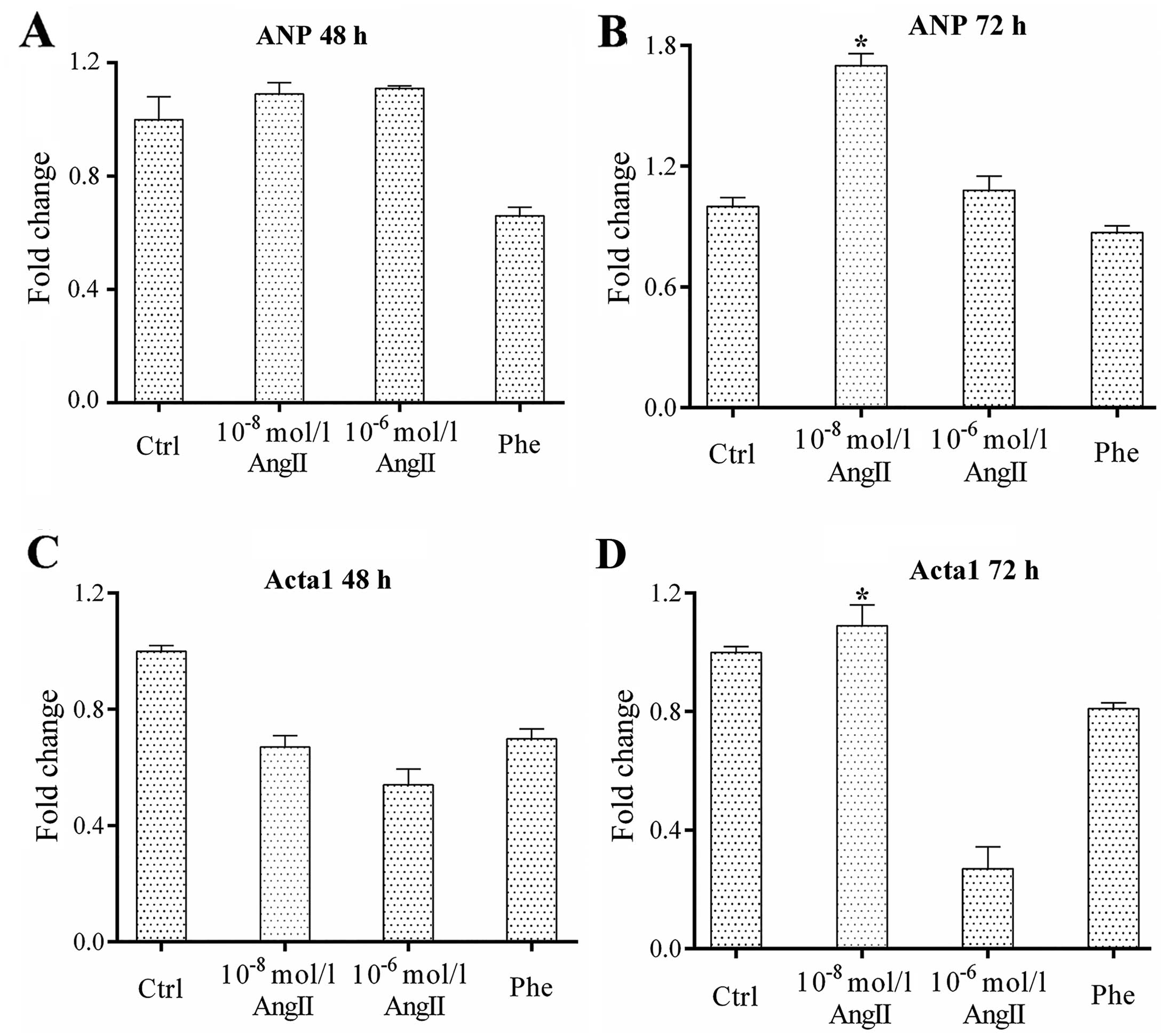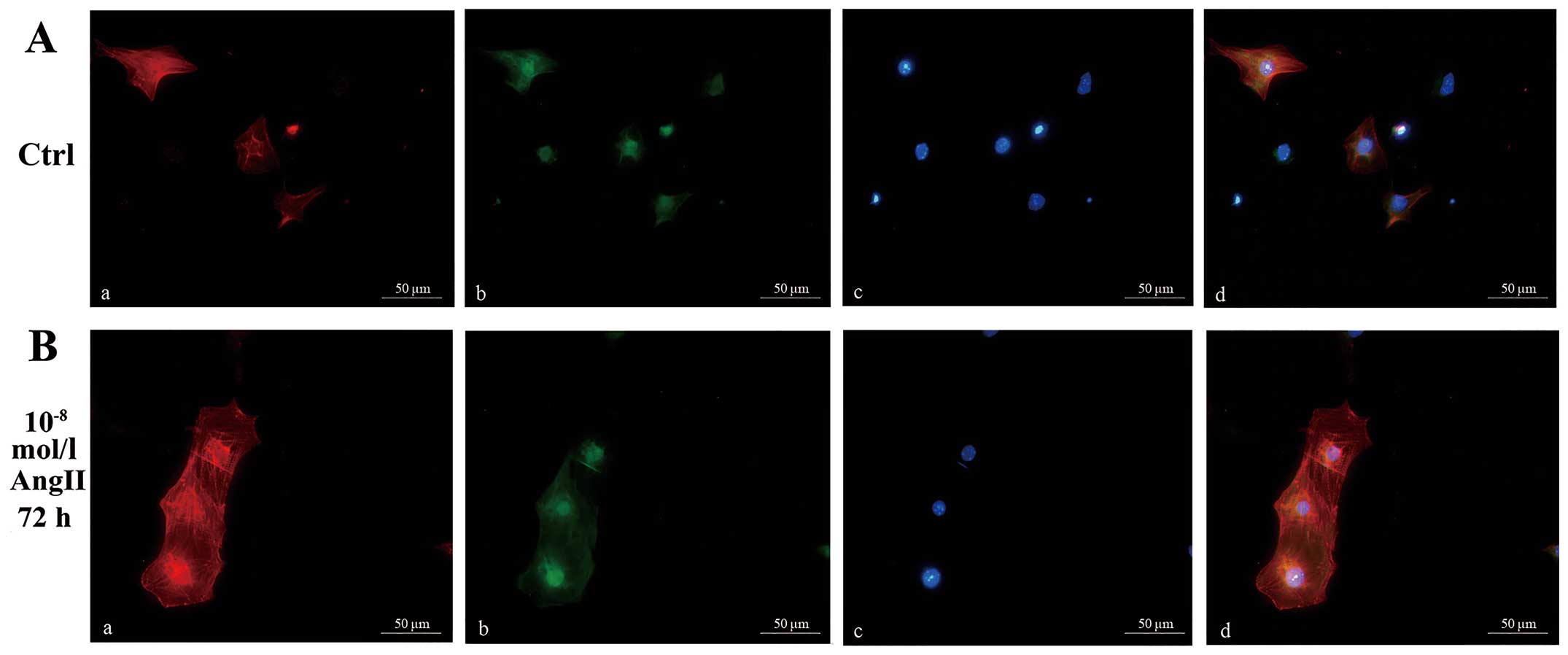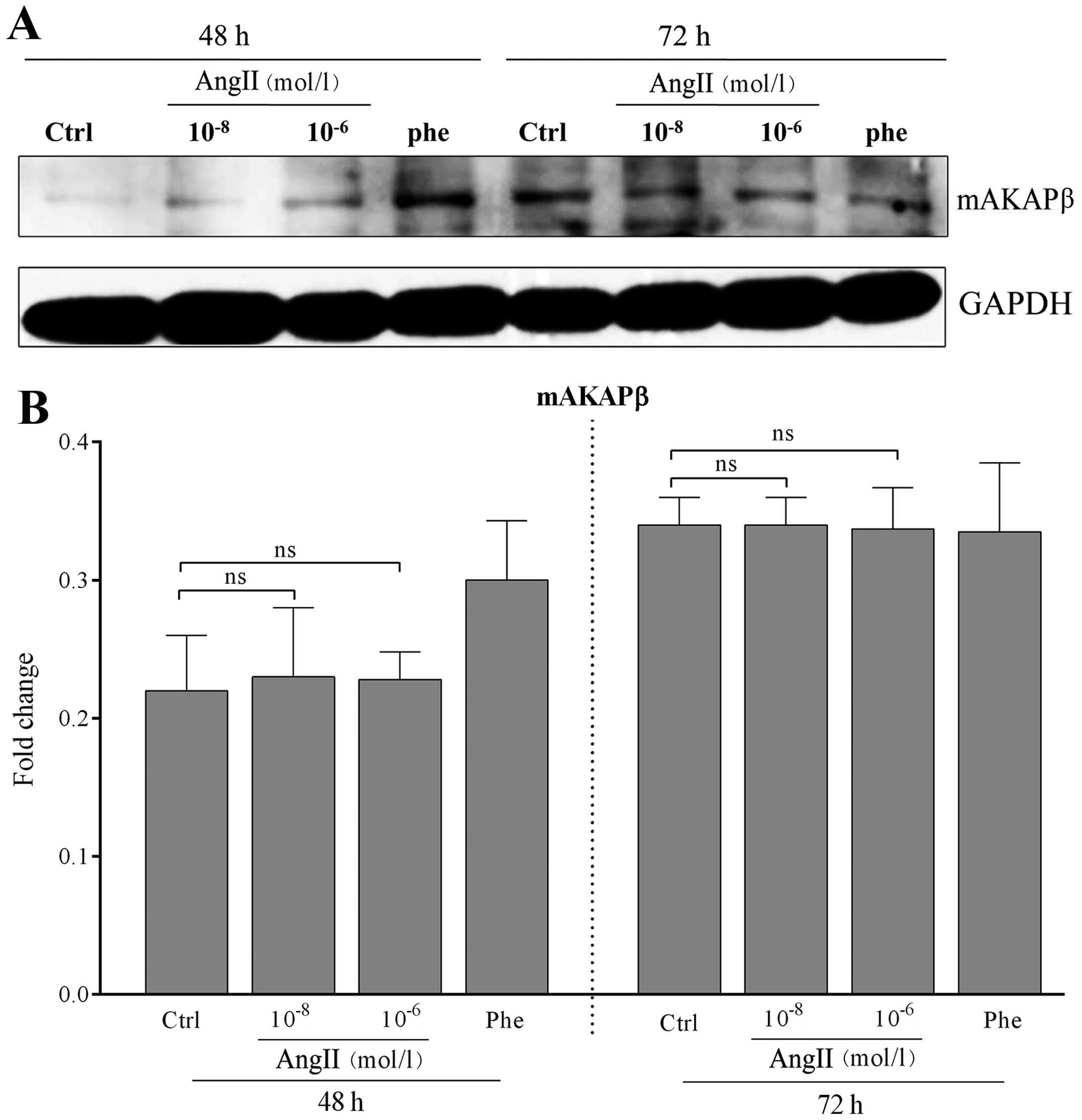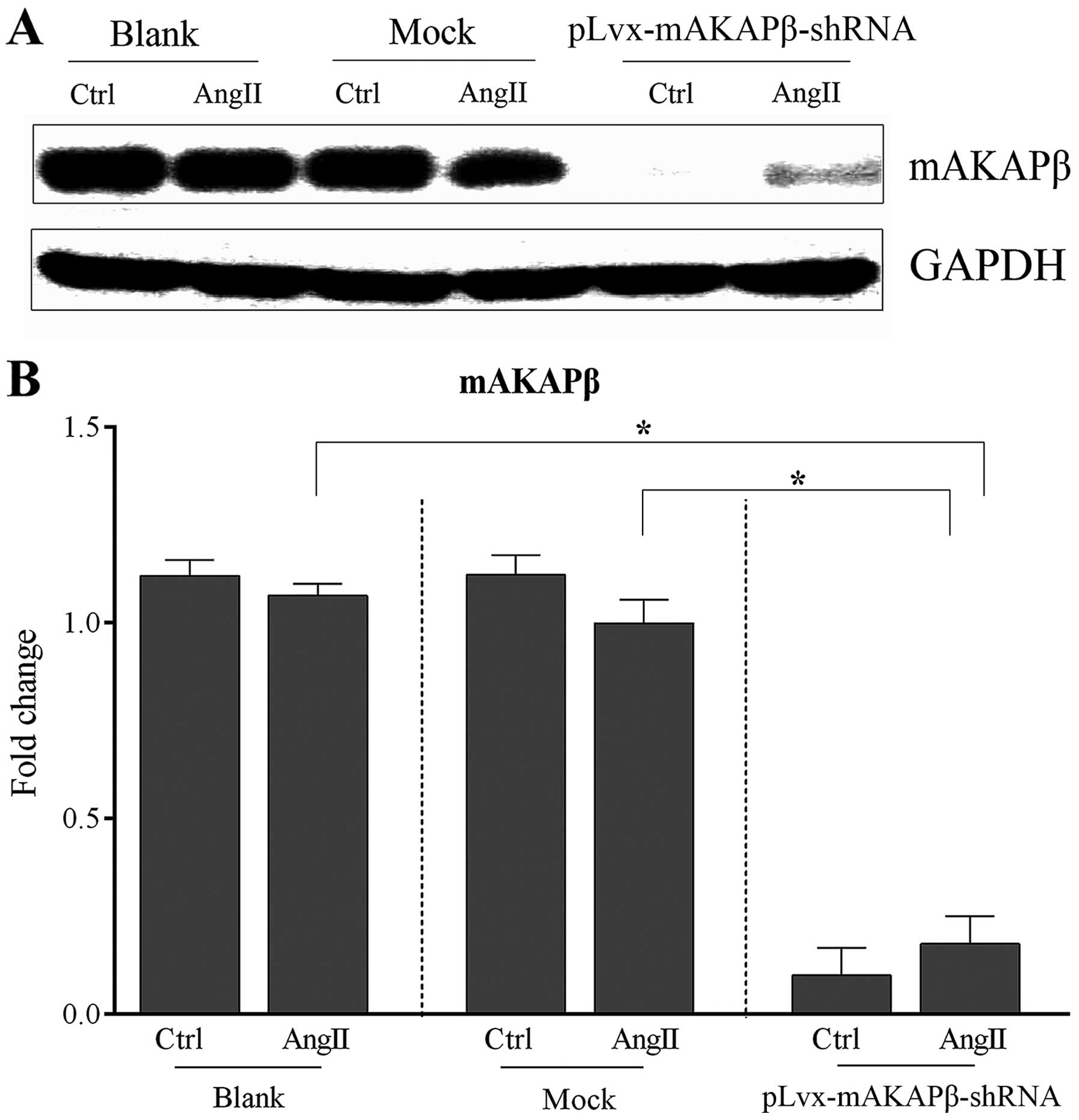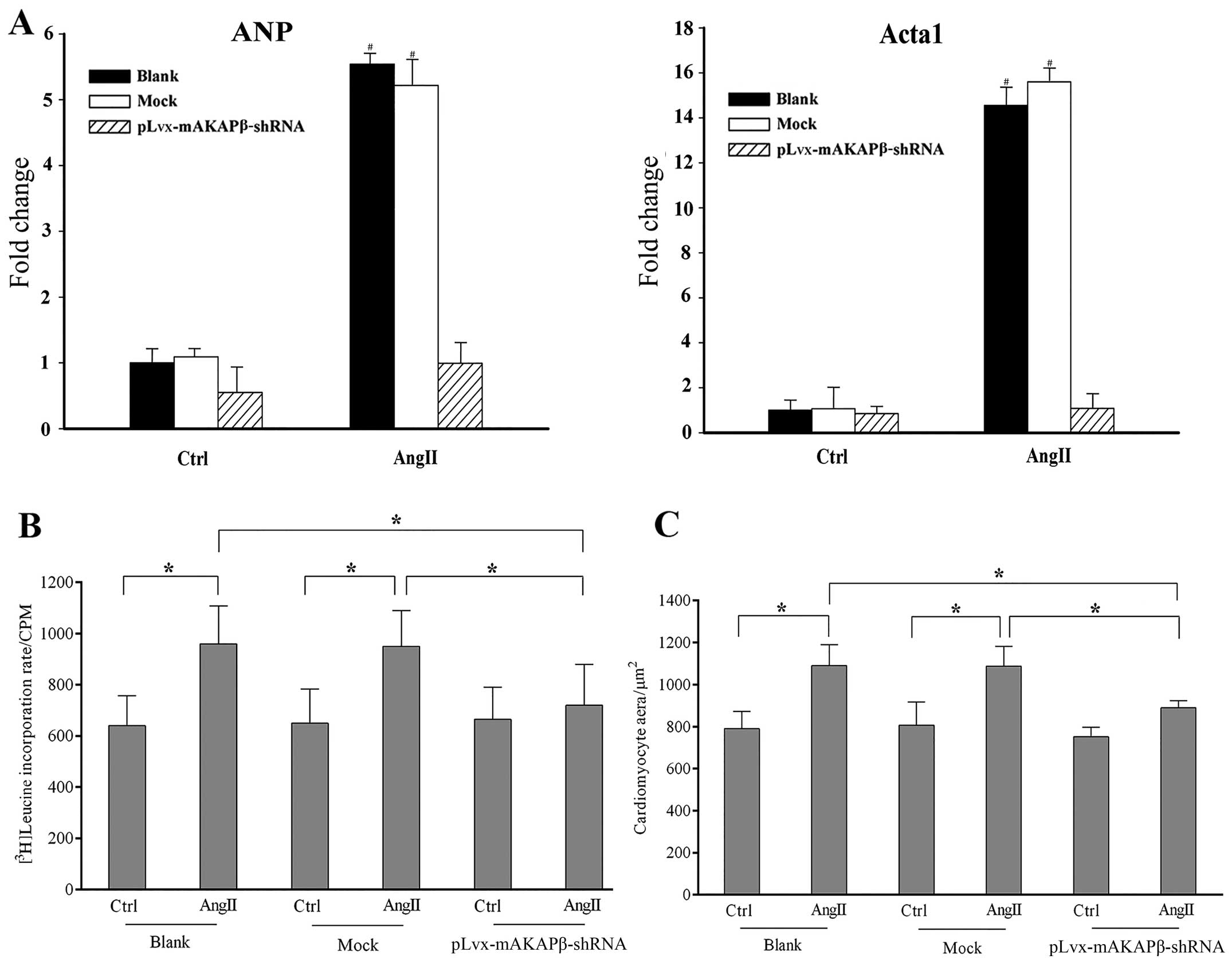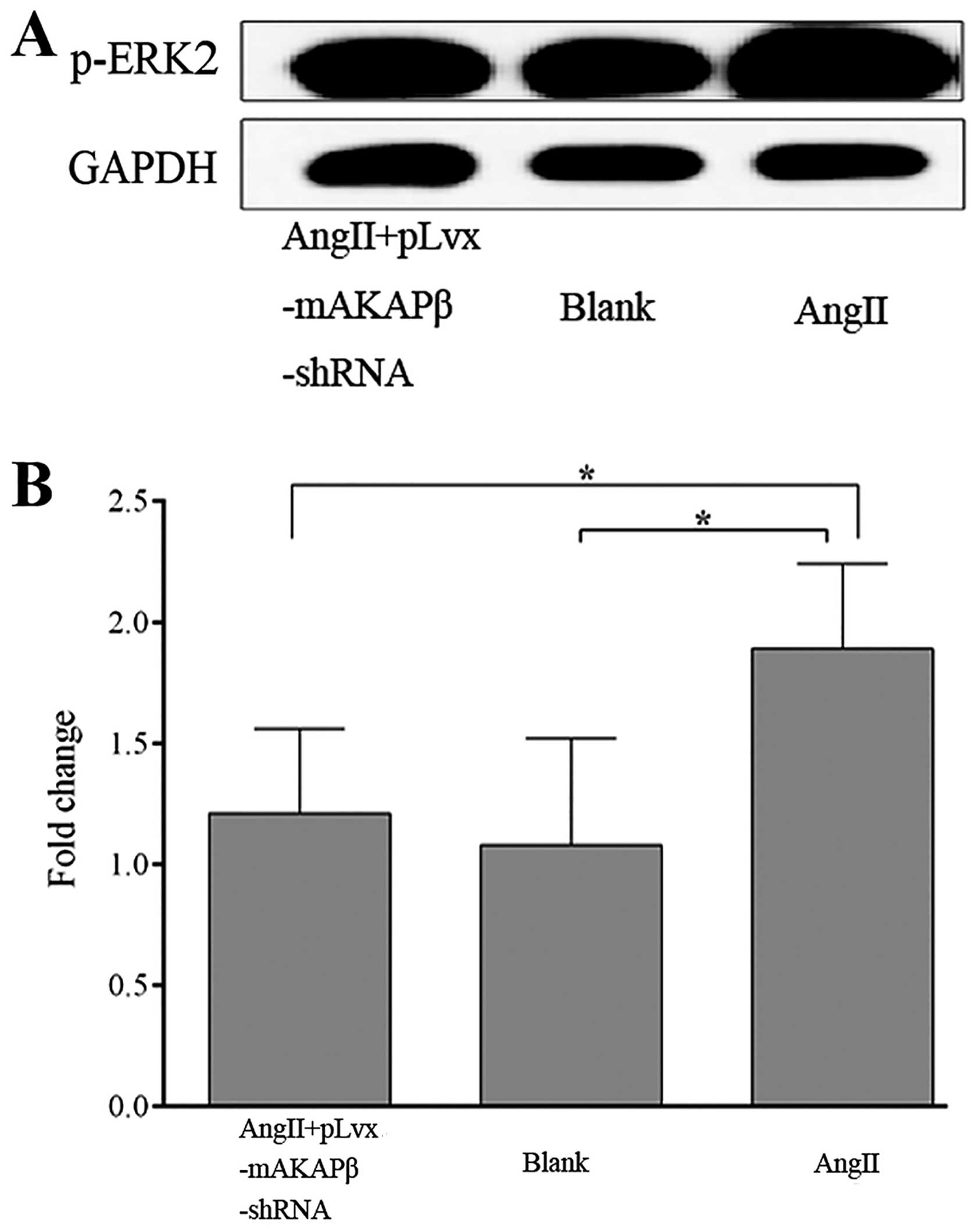|
1
|
Gupta S, Das B and Sen S: Cardiac
hypertrophy: mechanisms and therapeutic opportunities. Antioxid
Redox Signal. 9:623–652. 2007. View Article : Google Scholar : PubMed/NCBI
|
|
2
|
Zhang L, Malik S, Kelley GG, Kapiloff MS
and Smrcka AV: Phospholipase C epsilon scaffolds to muscle-specific
A kinase anchoring protein (mAKAPbeta) and integrates multiple
hypertrophic stimuli in cardiac myocytes. J Biol Chem.
286:23012–23021. 2011. View Article : Google Scholar : PubMed/NCBI
|
|
3
|
Aoyagi T, Fujii AM, Flanagan MF, Arnold
LW, Brathwaite KW, Colan SD and Mirsky I: Transition from
compensated hypertrophy to intrinsic myocardial dysfunction during
development of left ventricular pressure-overload hypertrophy in
conscious sheep: Systolic dysfunction precedes diastolic
dysfunction. Circulation. 88:2415–2425. 1993. View Article : Google Scholar : PubMed/NCBI
|
|
4
|
Oka T and Komuro I: Molecular mechanisms
underlying the transition of cardiac hypertrophy to heart failure.
Circ J. 72(Suppl A): A13–A16. 2008. View Article : Google Scholar : PubMed/NCBI
|
|
5
|
Oka T, Akazawa H, Naito AT and Komuro I:
Angiogenesis and cardiac hypertrophy: maintenance of cardiac
function and causative roles in heart failure. Circ Res.
114:565–571. 2014. View Article : Google Scholar : PubMed/NCBI
|
|
6
|
Papin JA, Hunter T, Palsson BO and
Subramaniam S: Reconstruction of cellular signalling networks and
analysis of their properties. Nat Rev Mol Cell Biol. 6:99–111.
2005. View
Article : Google Scholar : PubMed/NCBI
|
|
7
|
Molkentin JD and Dorn GW 2nd: Cytoplasmic
signaling pathways that regulate cardiac hypertrophy. Annu Rev
Physiol. 63:391–426. 2001. View Article : Google Scholar : PubMed/NCBI
|
|
8
|
Javadov S, Jang S and Agostini B:
Crosstalk between mitogen-activated protein kinases and
mitochondria in cardiac diseases: Therapeutic perspectives.
Pharmacol Ther. 144:202–225. 2014. View Article : Google Scholar : PubMed/NCBI
|
|
9
|
Heineke J and Molkentin JD: Regulation of
cardiac hypertrophy by intracellular signalling pathways. Nat Rev
Mol Cell Biol. 7:589–600. 2006. View
Article : Google Scholar : PubMed/NCBI
|
|
10
|
Pawson T and Nash P: Assembly of cell
regulatory systems through protein interaction domains. Science.
300:445–452. 2003. View Article : Google Scholar : PubMed/NCBI
|
|
11
|
Scott JD and Santana LF: A-kinase
anchoring proteins: getting to the heart of the matter.
Circulation. 121:1264–1271. 2010. View Article : Google Scholar : PubMed/NCBI
|
|
12
|
Dodge-Kafka KL, Langeberg L and Scott JD:
Compartmentation of cyclic nucleotide signaling in the heart: the
role of A-kinase anchoring proteins. Circ Res. 98:993–1001. 2006.
View Article : Google Scholar : PubMed/NCBI
|
|
13
|
Dodge-Kafka KL, Soughayer J, Pare GC,
Carlisle Michel JJ, Langeberg LK, Kapiloff MS and Scott JD: The
protein kinase A anchoring protein mAKAP coordinates two integrated
cAMP effector pathways. Nature. 437:574–578. 2005. View Article : Google Scholar : PubMed/NCBI
|
|
14
|
Kapiloff MS, Piggott LA, Sadana R, Li J,
Heredia LA, Henson E, Efendiev R and Dessauer CW: An adenylyl
cyclase-mAKAPbeta signaling complex regulates cAMP levels in
cardiac myocytes. J Biol Chem. 284:23540–23546. 2009. View Article : Google Scholar : PubMed/NCBI
|
|
15
|
Marx SO, Reiken S, Hisamatsu Y, Jayaraman
T, Burkhoff D, Rosemblit N and Marks AR: PKA phosphorylation
dissociates FKBP12.6 from the calcium release channel (ryanodine
receptor): defective regulation in failing hearts. Cell.
101:365–376. 2000. View Article : Google Scholar : PubMed/NCBI
|
|
16
|
Pare GC, Bauman AL, McHenry M, Michel JJ,
Dodge-Kafka KL and Kapiloff MS: The mAKAP complex participates in
the induction of cardiac myocyte hypertrophy by adrenergic receptor
signaling. J Cell Sci. 118:5637–5646. 2005. View Article : Google Scholar : PubMed/NCBI
|
|
17
|
Schulze DH, Muqhal M, Lederer WJ and
Ruknudin AM: Sodium/calcium exchanger (NCX1) macromolecular
complex. J Biol Chem. 278:28849–28855. 2003. View Article : Google Scholar : PubMed/NCBI
|
|
18
|
Wong W, Goehring AS, Kapiloff MS,
Langeberg LK and Scott JD: mAKAP compartmentalizes oxygen-dependent
control of HIF-1alpha. Sci Signal. 1:ra182008.PubMed/NCBI
|
|
19
|
Faul C, Dhume A, Schecter AD and Mundel P:
Protein kinase A, Ca2+/calmodulin-dependent kinase II,
and calcineurin regulate the intracellular trafficking of myopodin
between the Z-disc and the nucleus of cardiac myocytes. Mol Cell
Biol. 27:8215–8227. 2007. View Article : Google Scholar : PubMed/NCBI
|
|
20
|
Pare GC, Easlick JL, Mislow JM, McNally EM
and Kapiloff MS: Nesprin-1alpha contributes to the targeting of
mAKAP to the cardiac myocyte nuclear envelope. Exp Cell Res.
303:388–399. 2005. View Article : Google Scholar : PubMed/NCBI
|
|
21
|
de Gasparo M, Catt KJ, Inagami T, Wright
JW and Unger T: International union of pharmacology. XXIII. The
angiotensin II receptors. Pharmacol Rev. 52:415–472.
2000.PubMed/NCBI
|
|
22
|
Sever PS, Gradman AH and Azizi M: Managing
cardiovascular and renal risk: the potential of direct renin
inhibition. J Renin Angiotensin Aldosterone Syst. 10:65–76. 2009.
View Article : Google Scholar : PubMed/NCBI
|
|
23
|
Sata M and Fukuda D: Crucial role of
renin-angiotensin system in the pathogenesis of atherosclerosis. J
Med Invest. 57:12–25. 2010. View Article : Google Scholar : PubMed/NCBI
|
|
24
|
Wang CH, Li F and Takahashi N: The renin
angiotensin system and the metabolic syndrome. Open Hypertens J.
3:1–13. 2010. View Article : Google Scholar : PubMed/NCBI
|
|
25
|
Abadir PM: The frail renin-angiotensin
system. Clin Geriatr Med. 27:53–65. 2011. View Article : Google Scholar
|
|
26
|
Möllmann H, Schmidt-Schweda S, Nef H,
Möllmann S, Burstin JV, Klose S, Elsässer A and Holubarsch CJ:
Contractile effects of angiotensin and endothelin in failing and
non-failing human hearts. Int J Cardiol. 114:34–40. 2007.
View Article : Google Scholar
|
|
27
|
Fabris B, Candido R, Bortoletto M,
Zentilin L, Sandri M, Fior F, Toffoli B, Stebel M, Bardelli M,
Belgrado D, Giacca M and Carretta R: Dose and time-dependent
apoptotic effects by angiotensin II infusion on left ventricular
cardiomyocytes. J Hypertens. 25:1481–1490. 2007. View Article : Google Scholar : PubMed/NCBI
|
|
28
|
Schroder E, Magyar J, Burgess D, Andres D
and Satin J: Chronic verapamil treatment remodels ICa,L
in mouse ventricle. Am J Physiol Heart Circ Physiol.
292:H1906–H1916. 2007. View Article : Google Scholar
|
|
29
|
Kapiloff MS, Jackson N and Airhart N:
mAKAP and the ryanodine receptor are part of a multi-component
signaling complex on the cardiomyocyte nuclear envelope. J Cell
Sci. 114:3167–3176. 2001.PubMed/NCBI
|
|
30
|
Ruf S, Piper M and Schlüter KD: Specific
role for the extracellular signal-regulated kinase pathway in
angiotensin II- but not phenylephrine-induced cardiac hypertrophy
in vitro. Pflugers Arch. 443:483–490. 2002. View Article : Google Scholar : PubMed/NCBI
|
|
31
|
Niizeki T, Takeishi Y, Arimoto T,
Takahashi H, Shishido T, Koyama Y, Goto K, Walsh RA and Kubota I:
Cardiac-specific overexpression of diacylglycerol kinase zeta
attenuates left ventricular remodeling and improves survival after
myocardial infarction. Am J Physiol Heart Circ Physiol.
292:H1105–H1112. 2007. View Article : Google Scholar
|
|
32
|
Tsutamoto T, Asai S, Tanaka T, Sakai H,
Nishiyama K, Fujii M, Yamamoto T, Ohnishi M, Wada A, Saito Y and
Horie M: Plasma level of cardiotrophin-1 as a prognostic predictor
in patients with chronic heart failure. Eur J Heart Fail.
9:1032–1037. 2007. View Article : Google Scholar : PubMed/NCBI
|
|
33
|
Lu H, Fedak PW, Dai X, Du C, Zhou YQ,
Henkelman M, Mongroo PS, Lau A, Yamabi H, Hinek A, Husain M,
Hannigan G and Coles JG: Integrin-linked kinase expression is
elevated in human cardiac hypertrophy and induces hypertrophy in
transgenic mice. Circulation. 114:2271–2279. 2006. View Article : Google Scholar : PubMed/NCBI
|
|
34
|
Dorn GW 2nd and Force T: Protein kinase
cascades in the regulation of cardiac hypertrophy. J Clin Invest.
115:527–537. 2005. View Article : Google Scholar : PubMed/NCBI
|
|
35
|
Oka T, Xu J and Molkentin JD:
Re-employment of developmental transcription factors in adult heart
disease. Semin Cell Dev Biol. 18:117–131. 2007. View Article : Google Scholar
|
|
36
|
Michel JJ, Townley IK, Dodge-Kafka KL,
Zhang F, Kapiloff MS and Scott JD: Spatial restriction of PDK1
activation cascades by anchoring to mAKAPalpha. Mol Cell.
20:661–672. 2005. View Article : Google Scholar : PubMed/NCBI
|
|
37
|
Suzuki J, Matsubara H, Urakami M and Inada
M: Rat angiotensin II (type 1A) receptor mRNA regulation and
subtype expression in myocardial growth and hypertrophy. Circ Res.
73:439–447. 1993. View Article : Google Scholar : PubMed/NCBI
|
|
38
|
Baker KM, Booz GW and Dostal DE: Cardiac
actions of angiotensin II: Role of an intracardiac
renin-angiotensin system. Annu Rev Physiol. 54:227–241. 1992.
View Article : Google Scholar : PubMed/NCBI
|
|
39
|
Schunkert H, Dzau VJ, Tang SS, Hirsch AT,
Apstein CS and Lorell BH: Increased rat cardiac angiotensin
converting enzyme activity and mRNA expression in pressure overload
left ventricular hypertrophy. Effect on coronary resistance,
contractility, and relaxation. J Clin Invest. 86:1913–1920. 1990.
View Article : Google Scholar : PubMed/NCBI
|
|
40
|
Yamazaki T, Shiojima I, Komuro I, Nagai R
and Yazaki Y: Involvement of the renin-angiotensin system in the
development of left ventricular hypertrophy and dysfunction. J
Hypertens Suppl. 12:S153–S157. 1994.PubMed/NCBI
|
|
41
|
Pratt RE: Angiotensin II and the control
of cardiovascular structure. J Am Soc Nephrol. 10(Suppl 11):
S120–S128. 1999.PubMed/NCBI
|
|
42
|
Balakumar P and Jagadeesh G: A century old
renin-angiotensin system still grows with endless possibilities:
AT1 receptor signaling cascades in cardiovascular physiopathology.
Cell Signal. 26:2147–2160. 2014. View Article : Google Scholar : PubMed/NCBI
|
|
43
|
Mehta PK and Griendling KK: Angiotensin II
cell signaling: physiological and pathological effects in the
cardiovascular system. Am J Physiol Cell Physiol. 292:C82–C97.
2007. View Article : Google Scholar
|
|
44
|
Hunyady L and Catt KJ: Pleiotropic AT1
receptor signaling pathways mediating physiological and pathogenic
actions of angiotensin II. Mol Endocrinol. 20:953–970. 2006.
View Article : Google Scholar
|
|
45
|
Yoshida T, Tabony AM, Galvez S, Mitch WE,
Higashi Y, Sukhanov S and Delafontaine P: Molecular mechanisms and
signaling pathways of angiotensin II-induced muscle wasting:
potential therapeutic targets for cardiac cachexia. Int J Biochem
Cell Biol. 45:2322–2332. 2013. View Article : Google Scholar : PubMed/NCBI
|
|
46
|
Yamazaki T, Komuro I, Kudoh S, Zou Y,
Shiojima I, Mizuno T, Takano H, Hiroi Y, Ueki K, Tobe K, Kadowaki
T, Nagai R and Yazaki Y: Angiotensin II partly mediates mechanical
stress-induced cardiac hypertrophy. Circ Res. 77:258–265. 1995.
View Article : Google Scholar : PubMed/NCBI
|
|
47
|
Sadoshima J, Xu Y, Slayter HS and Izumo S:
Autocrine release of angiotensin II mediates stretch-induced
hypertrophy of cardiac myocytes in vitro. Cell. 75:977–984. 1993.
View Article : Google Scholar : PubMed/NCBI
|
|
48
|
Schorb W, Booz GW, Dostal DE, Conrad KM,
Chang KC and Baker KM: Angiotensin II is mitogenic in neonatal rat
cardiac fibroblasts. Circ Res. 72:1245–1254. 1993. View Article : Google Scholar : PubMed/NCBI
|
|
49
|
Zou Y, Komuro I, Yamazaki T, Kudoh S,
Aikawa R, Zhu W, Shiojima I, Hiroi Y, Tobe K and Kadowaki T:
critical roles of Gbetagamma subunit, Src family, and Ras in
cardiac fibroblasts. Circ Res. 82:337–345. 1998. View Article : Google Scholar : PubMed/NCBI
|
















